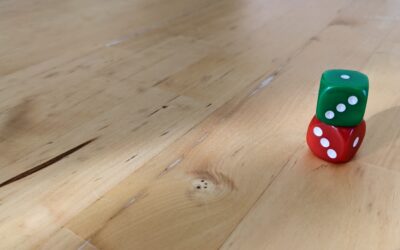The Full Federal Court has handed down their judgement in Commissioner of Patents v Aristocrat Technologies Australia Pty Ltd, overturning orders of the primary judge (Burley J) that found that an innovation patent directed toward an electronic gaming machine was patentable subject matter.
Background
Aristocrat Technologies Australia Pty Ltd (Aristocrat) is the patentee of Australian Innovation Patent No. 2016101967 (the Patent) directed toward an electronic gaming machine (EGMs), also known as a “slot machine”. An EGM comprises hardware such as a cabinet, a video display, a money receiving slot, and software to present simulated spinning reels with symbols.
During examination of the Patent, Aristocrat were unable to overcome a patentable subject matter objection. On appeal, the Delegate of the Commissioner of Patents concluded that the claims of the Patent, as well as three related innovation patents, were unpatentable subject matter.
On further appeal, the Federal Court concluded that the Patent was patentable subject matter based on a two-step test, namely:
- Does the invention relate to a mere scheme or business method? If yes, move to step 2, otherwise the invention is patentable subject matter.
- Consider whether the invention is in the computerisation of the scheme or business method.
Applying the first step of this test, Burley J concluded that the claims of the Patents were patentable subject matter as they were directed toward a
“mechanism of a particular construction, the operation of which involves a combination of physical parts and software to produce a particular outcome in the form of an EGM that functions in a particular way”.
Majority decision of Full Court
Upon consideration of the 2-step test, Middleton and Perram JJ (the majority) of the Full Court noted that the first step of the two-step test defined by the primary judge did not involve any question of computer implementation, yet the second step assumed that the scheme was implemented in a computer. The majority opined that
“… isolating from those decisions the single question of whether what is involved is a scheme is apt to lead to error unless the question of computer implementation is kept in the analysis. In substance, this is the error which, in our respectful opinion, has been made in this case.”
The majority proposed a revised two-step test, namely:
“(a) Is the invention claimed a computer-implemented invention?
(b) If so, can the invention claimed broadly be described as an advance in computer technology?
If the answer to (b) is no, the invention is not patentable subject matter. Of course if the answer to (a) is no, one must then consider the general principles of patentability.”
Upon consideration of the first step of the revised test, Aristocrat submitted that an EGM is a specific, highly regulated machine rather than a computer. However, their majority asserted that this submission
“…incorrectly assumes that these are mutually exclusive concepts but they are not. An EGM is a specific, highly regulated machine as Aristocrat submitted but this does not mean that it is not a computer.”
In particular, the majority concluded that the EGM was a computer because it comprised of a random number generator (itself comprising a processor and memory), an output device, input devices, and software instructions.
Moving onto the second step of the revised test, the majority noted that:
“… the next question is whether what is put forward as inventive (or innovative) about Claim 1 pertains to the development of computer technology or merely its use. The fact that integers 1.10-1.12 leave it entirely up to the person designing the EGM to do the programming which gives effect to the family of games which those integers define inevitably necessitates the conclusion that Claim 1 pertains only to the use of a computer. Indeed, it purports to do nothing else. Claim 1 is silent on the topic of computer technology beyond that the person implementing the invention should use some.”
Whilst Aristocrat submitted that the invention improved player engagement or increases subjective satisfaction, the majority concluded that this has no relevance to the development or advance of computer technology. Aristocrat also submitted that changes in the reel structure and the concept of configurable symbols were advances in computer technology. However, the majority dismissed this submission.
The majority also considered previous Federal Court decisions such as Konami and Neurizon where EGMs were considered patentable. However, the Full Court distinguished the current case from those decisions due to the respective inventions providing a technical solution to a practical problem in the field of gaming technology.
Furthermore, whilst the primary judge was persuaded by the contention that if a mechanical equivalent to an EGM could be patentable subject matter, then an EGM should also be considered patentable, the majority asserted that this concept does not
“… throw light, either one way or the other, on whether an abstract idea implemented in a computer constitutes patentable subject matter. In particular, it is important that the requirement that computer-implemented inventions constitute an advance in computer technology before being afforded patent protection is not undermined by analogies with physical devices where patent protection for the same abstract idea may indeed be afforded.”
Based on these reasons, the majority concluded that claim 1 of the Patent was not directed toward patentable subject matter and that the primary judge’s orders should be set aside. However, the majority ultimately agreed to remit the matter back to the primary judge for further consideration of the remaining claims of the Patent.
Minority decision of Full Court
Nicholas J agreed with the majority, for similar reasons, that the two-step test defined by the primary judge was erroneous.
In particular, the primary judge’s two step approach does not adequately address the question of whether the EGM referred to in claim 1 is, or includes, a computer and whether the invention that is in substance described and claimed is a computer implemented scheme or set of rules governing the playing of a game. In my respectful opinion the primary judge’s two step approach was erroneous.
However, his Honour did not explicitly endorse the revised two-step test proposed by the majority, instead referring to various authorities such as Research Affiliates and RPL Central to summarise the patentable subject matter enquiry:
… the question is whether what may have begun as a mere scheme, an abstract idea or mere information, has been transformed in some definite and tangible way so as to result in a product or method providing the required artificial effect. There must be some technical contribution either in the field of computer technology (eg. an improvement in processor, memory or display technology) or in some other field of technology to which the invention belongs. As the authorities to which I have referred to make clear, that transformation is unlikely to be achieved by taking an inherently unpatentable scheme and implementing it utilising generic computer technology for its well-known and well-understood functionality that does not involve any ingenuity in the way in which the computer is utilised.
Nicholas J concluded that the substance of the invention, as described and claimed, resided in the game program code which embodied a computer implemented scheme or set of rules for the playing of a game. His Honour then noted that the question is:
…whether there is anything about the way in which the game code causes the EGM to operate which can be regarded as having transformed what might otherwise be regarded as purely abstract information encoded in memory into something possessing the required artificial effect.
In considering whether the gaming machine described and claimed exhibited an unusual technical effect due to the way in which the computer was utilised, Nicholas J noted that the primary judge had not made any specific findings in relation to whether configurable symbols presented on the display of the EGM could be considered a technological innovation. His Honour appeared to be open to the possibility that the computer may provide this unusual technical effect, noting that
“…there may well be ways in which the computer could be utilised that adds to the attractiveness of the game through the use of unconventional technical methods or techniques which might themselves give rise to patentable subject matter.”
Ultimately, Nicholas J agreed with the majority that the primary judge’s orders be set aside and be remitted for further consideration.
Conclusion
This decision will obviously not be the last that we hear about this matter. Whilst different approaches appear to have been adopted by the Full Court in determining whether the claims are directed toward patentable subject matter, ultimately it would appear that there is a significant emphasis on the technical features of the claimed and described invention. We recommend that Australian patent applications directed toward computer implemented inventions should be drafted to explicitly describe technical solutions which address technical problems thereby allowing the possibility of presenting strong arguments in response to patentable subject matter objections which may arise during examination.









